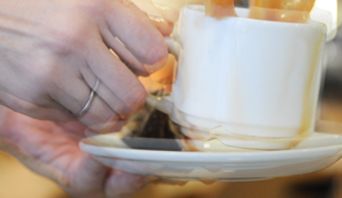We have all at some point noticed someone moving about strangely or having difficulty with movement. This person most likely has an involuntary muscle movement when he has no control over it. There are a host of medical conditions that can cause particular, spontaneous movements in the body. This type of abnormal reflex or unconscious movement has the medical term of dyskinesia. Dyskinesias vary according to the cause and medical appearance. Treatments may also differ according to the causes of the condition.

Types and Causes of Involuntary Muscle Movement
The most common cause of dyskinesias is disease of the cerebrovascular system, such as stroke, Parkinson's disease. Below are some categories of this condition and their causes:
1. Athetosis
Athetosis is characterized by slow, flowing movements of the extremities like the fingers and toes. Other areas that may exhibit this motion are the tongue, neck, legs and arms. The causes include jaundice in babies, Huntington's chorea and asphyxia or suffocation. It occurs when the body is deprived of oxygen for an extended period of time. There will be brain damage when brain cells have insufficient oxygen.
2. Chorea
Chorea is characterized by very jerky and sudden motions ending with a frozen posture that is held for a few seconds. This type of dyskinesia can be the result of certain medications a person may be taking, such as drugs for epilepsy, mental conditions like schizophrenia, or Parkinson's disease. There are some genetic diseases that also cause chorea like Wilson's disease and Huntington's chorea. However, there are also a host of other causes like poisoning from alcohol, mercury, carbon monoxide, etc. Vitamin B1 and B12 deficiencies can also lead to chorea. Hormonal treatments like hormone replacement therapy and oral contraceptives may also cause chorea.
3. Dystonias
This type of involuntary muscle movement is typified by a muscle contraction that lasts for a prolonged period. It can involve a single muscle group or several muscle groups. It can comprise of repetitive and twisting motions that form irregular postures. It may be instigated by a voluntary movement. There are various categories of dystonias that can occur. Some common areas where dystonias typically occur are: eyelids, jaw, tongue, lips, etc. Dystonias are usually worsened by stress or extreme tiredness. It is caused by some medications or chemicals as an adverse effect, or diseases like Parkinson's disease. Depending upon the cause and severity of the condition, the doctor may prescribe certain oral medicines or a surgical procedure to correct it.
4. Hemiballism
Hemiballism usually involves one limb, like an arm or leg. The limb is often thrown about uncontrollably and can be attributed to a brain disorder. Generally, this condition resolves spontaneously after a few months. There are medications that can be prescribed to control the movements.
5. Myoclonus
These are rapid jerks of muscles that can cause a degree of debility. They occur as a result of brain disorders, epilepsy, etc. They can arise as a person is startled or with a voluntary muscle movement. There are various forms of this type of involuntary muscle movement. Certain medications can be prescribed to control them.
6. Tardive Dyskinesia
This type of abnormal movement is most often in response to medications for certain brain disorders. Usually 30% of cases resolve after 3 months once the offending medication is stopped. Other patients will slowly recover over the following years. It is characterized by abnormal and uncontrolled lip-smacking, tongue protrusion and body rocking. But do have a correct diagnosis from your doctor before considering yourself as having some neurological disorder. Uncontrolled tremors can be caused by Parkinson's disease, alcohol and drug abuse, fear and anxiety, and heavy metal poisoning like mercury. There are therapies available to control tremors.
How to Manage Involuntary Muscle Movements
The medications used to control the condition are largely prescription drugs for brain disorders. Here is a very limited list:
- Haloperidol
- Chlorpromazine
- Primidone
- Propranolol
If your condition is not due to medications, excessive caffeine intake or stress, then you may use exercise to minimize your symptoms. Your doctor plays an important part in the correct diagnosis. Do not attempt to self-diagnose without the help of a medical professional. Here are some tips:
-
Use exercise to target areas that are affected by the involuntary muscle movements. For example, using squats to control muscles in the lower part of the body, walking on a foot afflicted by muscle contractions, doing push-ups for upper body muscle control. The idea is to strengthen and force the muscles to contract with exercise and potentially cease the involuntary motions.
-
Yoga will help the muscle to stretch gently. The relaxation and deep breathing in yoga will help to relax those contracting muscles and stop the involuntary contractions.
-
Exercise the joint closest to the affected muscle. In many cases, it is the nerves that are causing those muscles to contract rather that the actual muscle. Use gentle stretching and exercise to eliminate the muscle contractions by supporting the nerve bundle feeding into that muscle.
-
If your hand has a tremor, use a rubber ball to squeeze regularly during the day. Exercising those muscles in your hand may eliminate the tremor.
